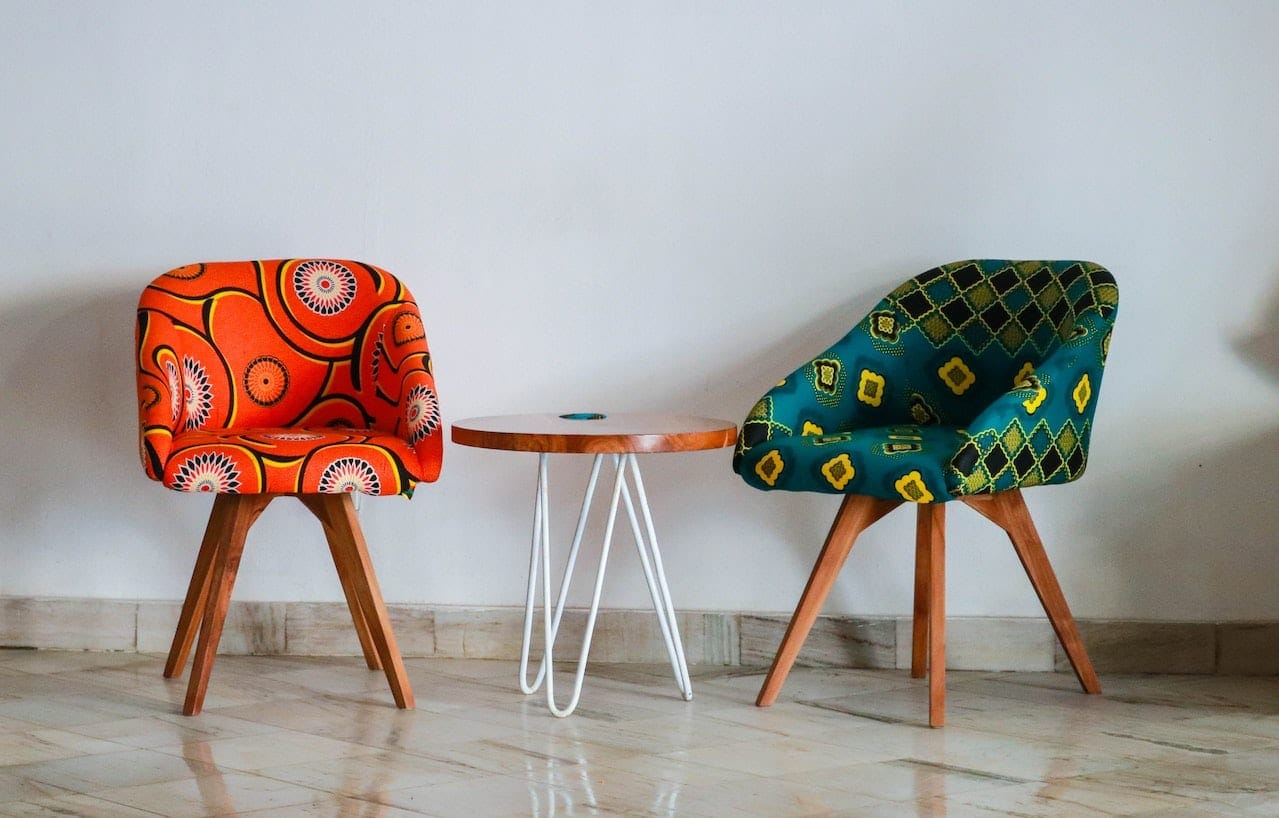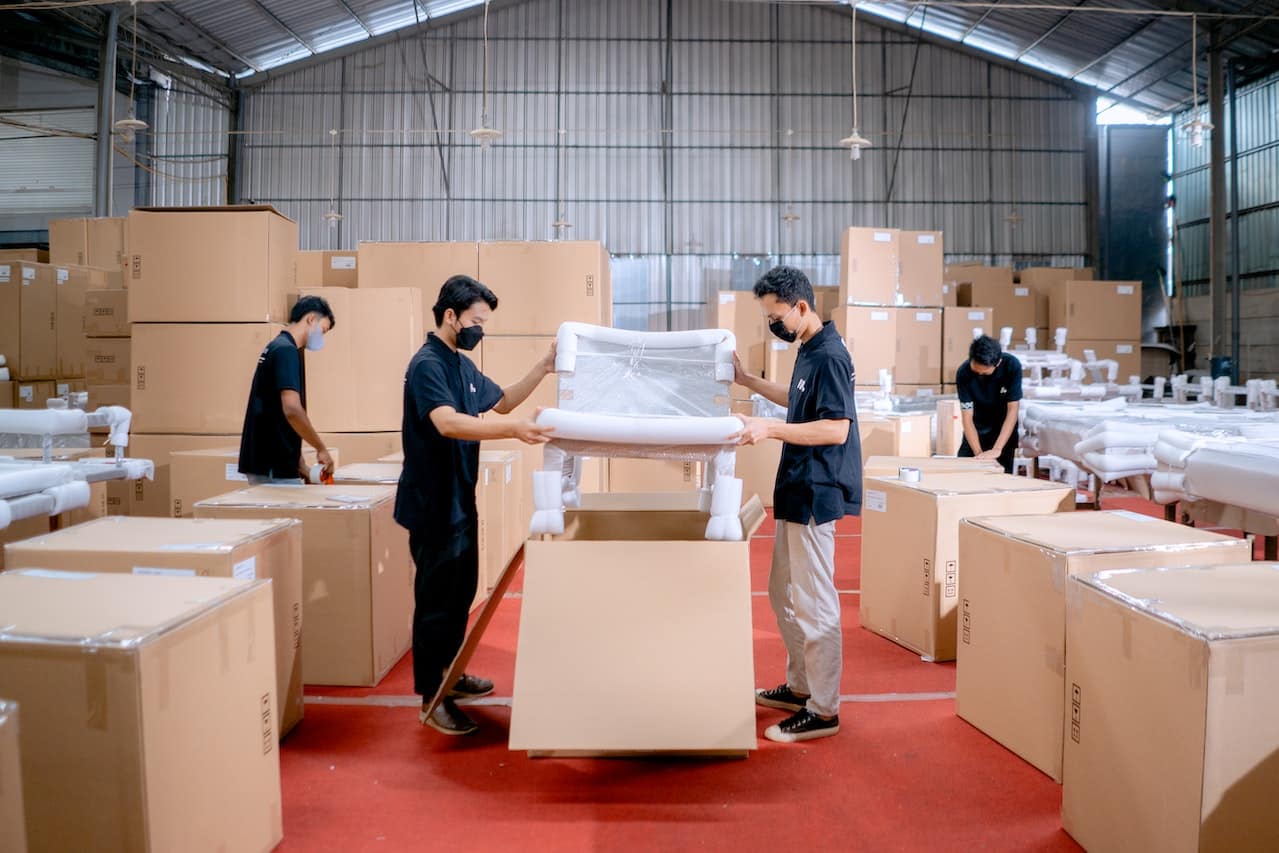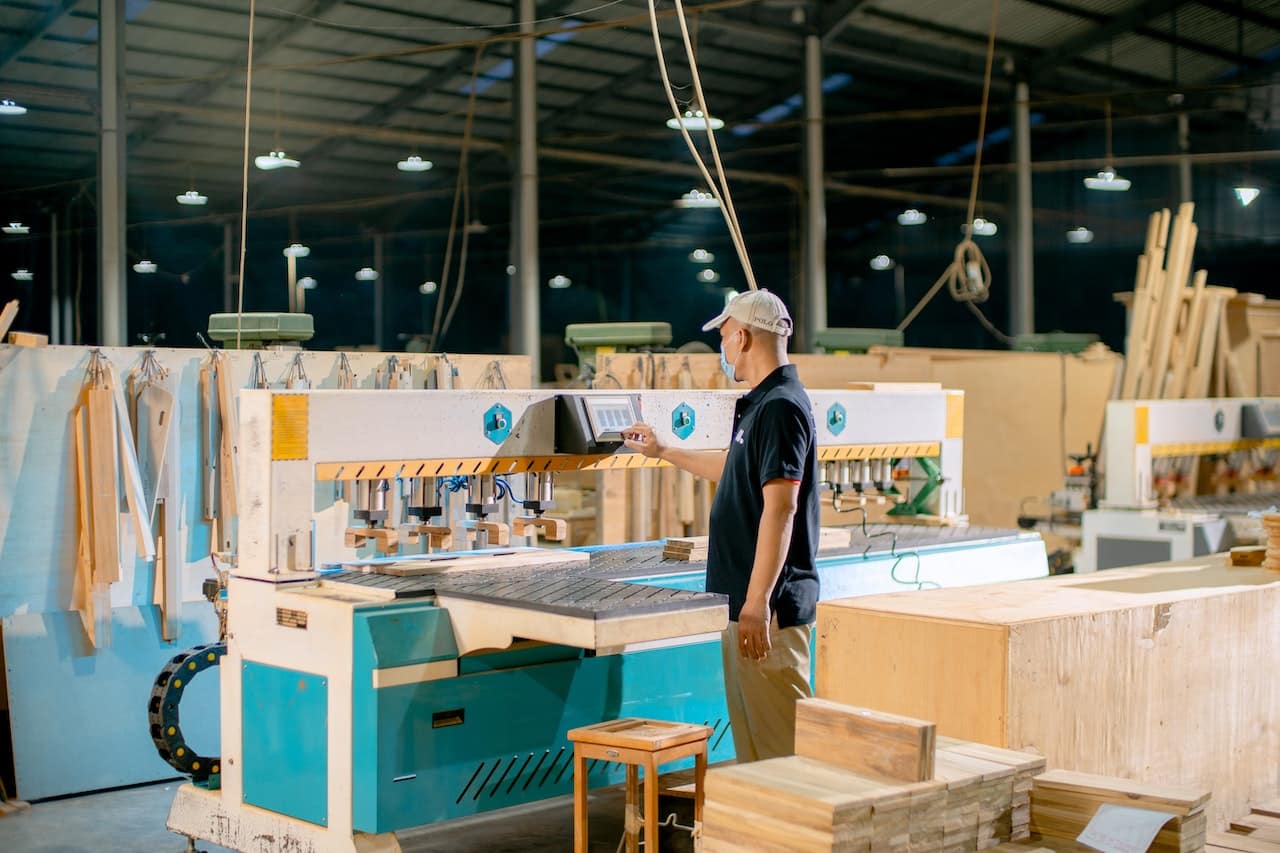Our PESTLE Analysis of the furniture industry examines the political, social, economic, and other factors influencing furniture companies.
Are you obsessed with cool furniture? If yes, then get ready to dive into the exciting world of furniture. But before you start dreaming about the perfect couch or the cosiest bed, let's look at the forces shaping the furniture industry.
To examine the external factors that impact the furniture industry, we will conduct a PESTLE Analysis of the furniture industry. We will examine the political, social, economic, technological, legal, and environmental factors influencing furniture companies.
So if you're interested in the furniture industry, buckle up and join us on this journey to discover what's driving the business.
The furniture industry has a rich and diverse history that spans centuries and multiple continents. The earliest known examples of furniture date back to ancient Egypt, where pieces such as chairs, tables, and beds were crafted using simple hand tools and traditional techniques.
Similar developments took place in other ancient civilizations, such as Greece and Rome, where furniture was also considered a symbol of wealth and status.
As societies and cultures evolved, so did furniture design and production. For example, during the Renaissance, furniture-making techniques became more sophisticated, with an emphasis on decorative arts and ornate designs.
The Industrial Revolution transformed the furniture industry by introducing mass production techniques for faster and more efficient production.
This led to greater accessibility of furniture for the general population and the use of new materials such as metal and glass.
In the 20th century, furniture design was heavily influenced by the modernist movement, which emphasized simplicity, functionality, and minimalism.
This led to the development of iconic designs such as the Barcelona chair made by Ludwig Mies van der Rohe.
Today, the furniture industry is a global industry worth $587 billion, with a wide range of products and styles to suit different tastes and preferences.
Using advanced manufacturing techniques and materials such as plastics and composites has increased efficiency and lower production costs.
At the same time, a growing awareness of environmental concerns has led to a greater focus on sustainable and eco-friendly furniture.
The furniture industry has also been shaped by changing consumer preferences, as people seek out furniture that is functional, stylish, customizable, and adaptable to their lifestyles.
The rise of e-commerce and digital platforms has also made it easier for consumers to research and purchase furniture worldwide.
Now that we have discussed the history and the current status of the furniture industry in detail let's discuss what PESTLE analysis is.
PEST analysis is a tool organizations use to highlight what external factors influence different organizations and businesses. Now let's conduct the PESTLE analysis of the furniture industry to see what external factors impact the operations of the furniture industry.

Political Factors Affecting The Furniture Industry
The furniture industry is affected by various domestic and international political factors. These factors can significantly impact the industry, from production costs to consumer demand.
One major political factor affecting the furniture industry is trade policy. The furniture industry is highly globalized, with products and materials being sourced from all over the world.
Changes to trade policies, such as tariffs or trade agreements, can have a major impact on furniture companies' production costs and competitiveness.
For example, a tariff on imported materials could drive up production costs. But, simultaneously, a trade agreement that lowers trade barriers could open up new markets and increase demand.
Besides that, political stability and unrest can also impact the furniture industry. In regions where political instability or conflict is present, production and distribution may be disrupted or delayed, leading to supply chain issues and increased costs.
Another political factor that affects the furniture industry is regulations and standards. For example, governments may regulate the use of certain materials, such as chemicals or wood, or establish standards for safety or sustainability.
These regulations and standards can increase production costs for furniture companies. Still, they can also provide opportunities for companies to meet the requirements and differentiate themselves from competitors.
Moreover, government subsidies and incentives can also affect the furniture industry. Governments may provide financial support for companies producing eco-friendly or energy-efficient products, for example, or offer tax incentives for companies investing in new technology.
These subsidies and incentives can help furniture companies reduce costs and increase competitiveness.

Economic Factors Affecting The Furniture Industry
The furniture industry is a significant contributor to the global economy. However, it is affected by a variety of economic factors.
One major economic factor that affects the furniture industry is consumer spending. The industry is susceptible to changes in consumer spending patterns, as furniture purchases are often discretionary and can be delayed during economic uncertainty.
During economic downturns, consumers may delay furniture purchases, leading to a slowdown in demand and lower revenues for furniture companies.
Inflation and currency fluctuations can also significantly impact the furniture industry. Inflation can drive production costs, while currency fluctuations can impact the price of imported materials and finished products.
Furniture companies that rely on exports may be particularly vulnerable to currency fluctuations, as changes in exchange rates can impact their competitiveness in international markets.
Moreover, broader economic trends, such as economic growth and recessions, affect the furniture industry. During periods of economic growth, consumer demand for furniture tends to be higher, while during recessions, demand may slow down.
Furniture companies that can adapt to economic trends and develop strategies to mitigate risks may succeed in the long run.

Social Factors Affecting The Furniture Industry
The furniture industry is influenced by several social factors, including demographic shifts, changing consumer preferences, and cultural attitudes.
One major social factor affecting the furniture industry is demographic changes. As populations age and become more diverse, furniture companies must adapt their products to meet changing consumer needs and preferences.
For example, an aging population may increase demand for comfortable and supportive furniture for people with mobility issues.
Changing consumer preferences are another important social factor affecting the furniture industry. Consumers today are more concerned about sustainability and environmental impact, leading to increased demand for eco-friendly and sustainable furniture.
Additionally, consumers are increasingly interested in customizable and modular furniture that can be tailored to their specific needs and preferences.
Cultural attitudes also play a role in shaping the furniture industry. For example, some cultures see furniture as a status symbol, and there may be greater demand for luxury or high-end products.
In other cultures, minimalism and simplicity may be more valued, increasing demand for functional and unobtrusive furniture.
Moreover, social issues such as income inequality and housing affordability can impact the furniture industry.
In areas where housing is expensive, consumers may be more likely to purchase smaller, multi-functional furniture that can save space. Similarly, in areas with high levels of income inequality, there may be greater demand for affordable furniture options.

Technological Factors Affecting The Furniture Industry
The furniture industry is experiencing significant changes due to several technological factors.
One major technological factor affecting the furniture industry is the rise of automation and robotics.
Robotics technology is used in furniture production, including cutting and shaping wood, assembling parts, and applying finishes.
This technology can potentially increase efficiency and reduce labor costs for furniture companies while improving product consistency and quality.
Data analytics and artificial intelligence are also being used to improve various aspects of the furniture industry, from supply chain management to product design.
By analyzing consumer preferences and behavior data, furniture companies can identify trends and develop products that better meet consumer needs.
AI-powered tools are also used to optimize production processes and improve product quality. The Internet and e-commerce are also significantly impacting the furniture industry.
Online shopping has made it easier for consumers to discover and purchase furniture from anywhere worldwide while providing furniture companies with new distribution channels and sales opportunities.
Many furniture companies now offer virtual showrooms and augmented reality tools, allowing consumers to visualize furniture in their homes before making a purchase.

Legal Factors Affecting The Furniture Industry
The furniture industry is a significant part of the global economy. However, like every other industry, the furniture sector is subject to legal factors that impact its operations and profitability.
Labor laws also play a significant role in the furniture industry. Furniture manufacturing involves various tasks, such as cutting, sanding, and assembling, which require skilled labor.
The industry also employs workers in sales, marketing, and administration. Labor laws protect the rights of these workers, including minimum wage requirements, working hours, and workplace safety.
Non-compliance with labor laws can lead to lawsuits, financial penalties, and loss of reputation, which can harm the furniture company's operations and profitability.
Moreover, product safety regulations are also critical factors affecting the furniture industry. Furniture products must comply with strict safety regulations to ensure they do not pose any risk to consumers.
For example, furniture manufacturers must ensure that their products do not contain harmful chemicals or materials that can cause harm to consumers.
They must also provide clear instructions on how to use the product safely. Failure to comply with these regulations can lead to legal action, loss of reputation, and financial losses.
Besides that, intellectual property laws are crucial in protecting the creativity and innovation of furniture manufacturers. The industry is known for its unique designs and styles that make it stand out.
For this reason, furniture manufacturers invest heavily in research and development to develop new designs that attract customers.
Intellectual property laws such as patents, trademarks, and copyrights protect the manufacturers' unique designs and prevent others from copying or using them without permission.
This legal protection helps furniture manufacturers maintain their competitive advantage in the market.

Environmental Factors Affecting The Furniture Industry
Like every other industry, the furniture industry is subject to environmental factors that impact its operations and sustainability.
One environmental factor affecting the furniture industry is the availability of raw materials. Furniture manufacturing requires various raw materials such as wood, plastic, and metal.
The availability of these raw materials is crucial to the furniture industry's sustainability. For example, wood is a crucial raw material for furniture manufacturing but also a limited resource.
Therefore, furniture manufacturers must adopt sustainable forestry practices to ensure that they do not contribute to deforestation or depletion of natural resources.
Deforestation is another critical environmental factor that affects the furniture industry. Deforestation is clearing trees and forests for various purposes, including agriculture, construction, and furniture manufacturing.
Furniture manufacturers are among the largest consumers of wood, which contributes significantly to deforestation. Therefore, furniture manufacturers must adopt sustainable forestry practices such as reforestation, responsible sourcing, and alternative materials.
Waste management is also an essential environmental factor that affects the furniture industry. Furniture manufacturing produces significant waste from sawdust, scraps, and other materials.
To minimize their environmental impact, furniture manufacturers must adopt effective waste management practices such as recycling, repurposing, and waste reduction.
Proper waste management practices also help furniture manufacturers reduce operating costs and improve sustainability.

PESTLE Analysis of The Furniture Industry: Final Word
The furniture industry is one of the significant industries that operate worldwide. This article shed light on its history and discussed how it evolved over the years.
After discussing that, we explained what PESTLE analysis is and proceeded further to conduct the PESTLE analysis of the furniture industry. The PESTLE analysis highlighted what external factors impact the furniture industry. Reading this article not only made you aware of the external factors that impact the furniture industry but also made you aware of what the PESTLE analysis framework is. If you want to read more similar articles, look at some PESTLE analysis examples.


